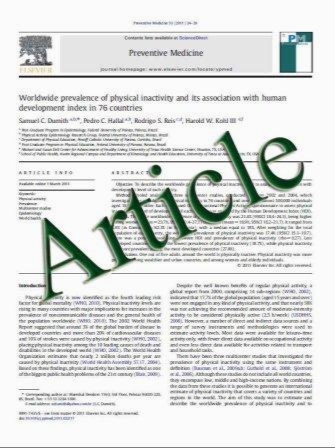Gait analysis of walking before and after medial opening wedge high tibial osteotomy
- نوع فایل : کتاب
- زبان : انگلیسی
- مؤلف : Martin Lind • Jodie McClelland • Joanne E. Wittwer • Timothy S. Whitehead • Julian A. Feller •Kate E. Webster
- چاپ و سال / کشور: 2011
Description
Introduction Medial opening wedge high tibial osteotomy (HTO) is used to treat medial compartment osteoarthritis (OA) of the knee. HTO shifts the weight-bearing line from the medial compartment into the lateral compartment. The aim of this study was to investigate the functional biomechanical consequences of this alteration in alignment. Methods Eleven male patients with medial compartment osteoarthritis underwent three-dimensional gait analysis during level walking before 12 months and after medial opening wedge HTO. Nine male control subjects of a similar age were also tested using the same protocol. Sagittal and coronal angles and moments in both operated and non-operated knees were compared. Pre and postoperative radiographic coronal plane alignment was also measured. Results Walking speed increased significantly postoperatively (P = 0.0001) and was not different from controls. Preoperatively, maximum knee flexion in stance was reduced compared to control (P = 0.02). Postoperatively, maximum knee flexion increased significantly (P = 0.005) and was the same as the controls. Similar changes were observed for the maximum knee flexion moment. The mean maximum varus angle during stance was reduced from 13.5 preoperatively to 5.4 postoperatively (P = 0.0001) compared to (6.8) in controls. The mean maximum adduction moment also reduced from 3.9 to 2.7 (% Bw/ht, P = 0.02), compared to 3.6 in control subjects. Interestingly, the adduction moments in the non-operated knee increased postoperatively from 3.3 to 4.1 (% Bw/ht, P = 0.02). The mean radiological mechanical alignment was changed from 172 degrees preoperatively to 180 degrees postoperatively (P\0.001). Conclusion HTO resulted in normalisation of several dynamic knee function parameters such as walking speed, knee flexion and external knee flexion moment. As anticipated, HTO reduced the varus angle and adduction moments of the operated knee. An increased adduction moment in the non-operated knee over the first postoperative year was found. Level of evidence Prospective case–control clinical laboratory study, Level III
Knee Surg Sports Traumatol Arthrosc DOI 10.1007/s00167-011-1496-y Received: 31 May 2010 / Accepted: 24 March 2011


